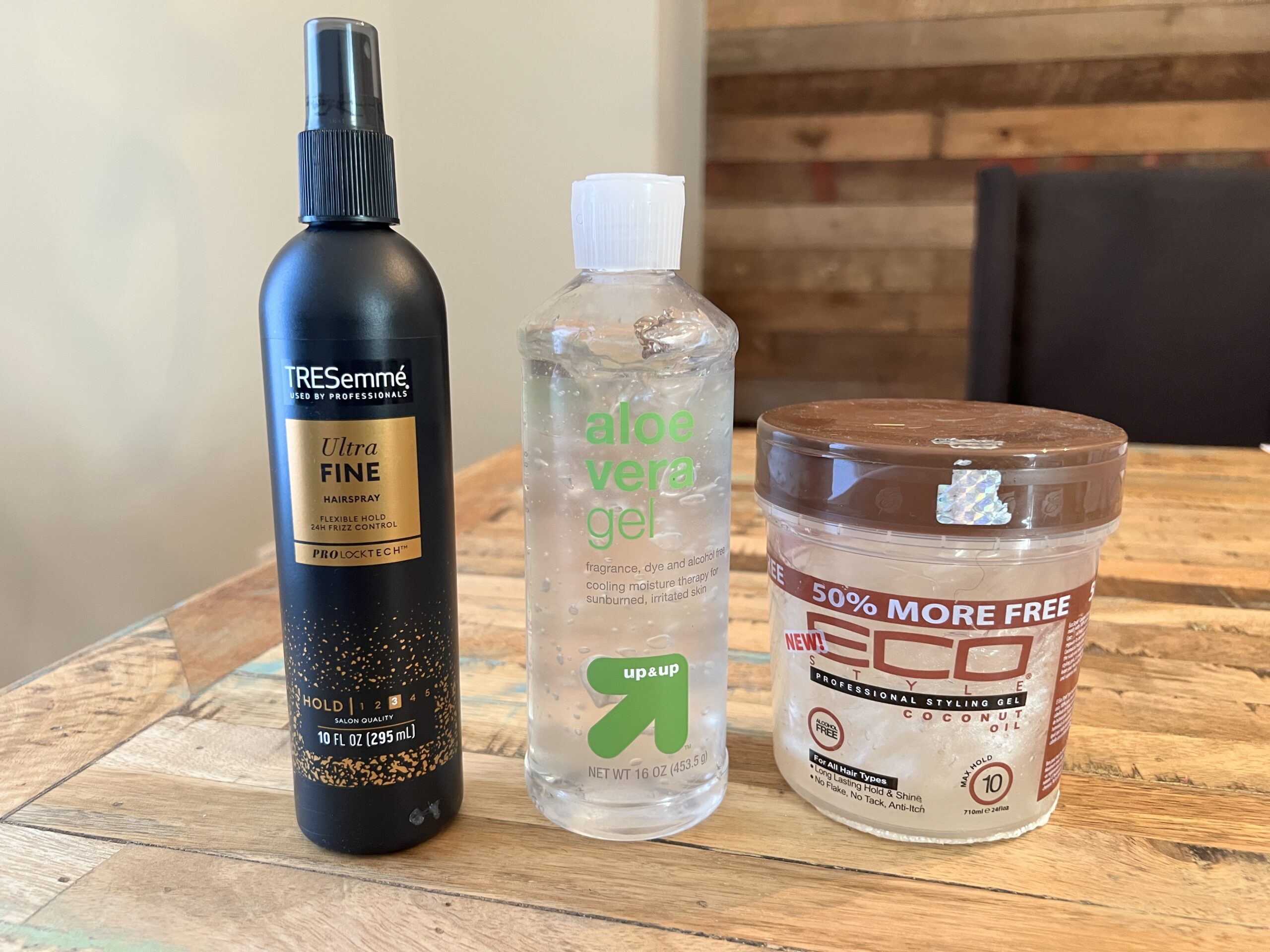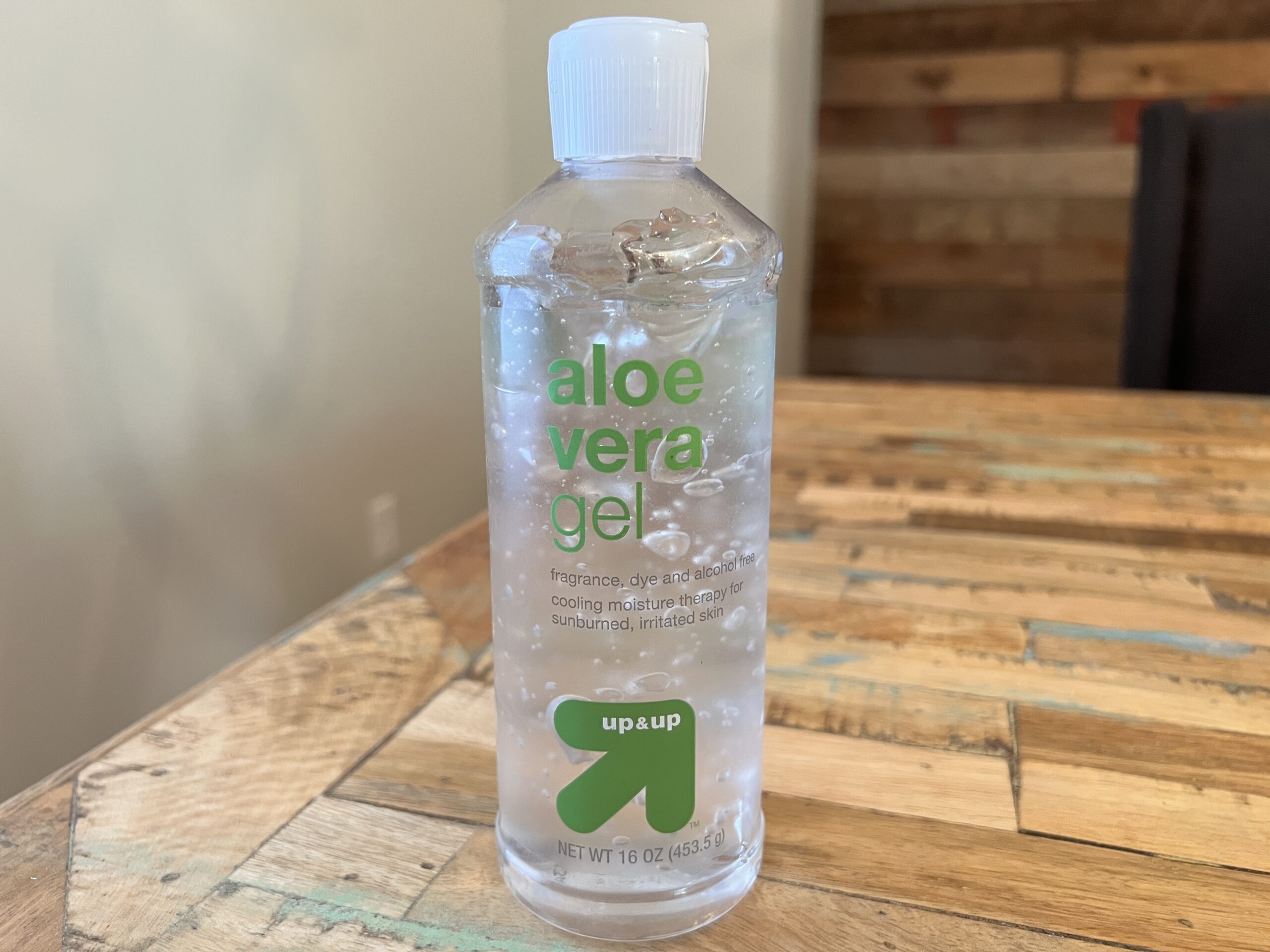
Are you tired of the never-ending struggle to keep your hair in place? Have you tried countless products, only to be left frustrated with a hairstyle that just won't hold? If this hits close to home, you've come to the right place.
People usually turn to two main products to solve this problem - hair spray and gel. But which is best and when?
In this article, we delve into a common hair-care dilemma - hair spray vs. gel. We'll unpack the pros and cons, break down the products' composition, and explore which product is best suited for your hair type and desired style.
By the end of this article, you will have a clear understanding of these two hair styling products and be equipped to make an informed choice. Say goodbye to bad hair days, and hello to the best version of your hair!
Table of Contents
- 1 Hair Spray vs. Gel: The Differences
- 2 Hair Spray vs. Gel: The Similarities
- 3 What Are the Pros of Using Hair Spray?
- 4 What Are the Cons of Using Hair Spray?
- 5 What Are the Pros of Using Hair Gel?
- 6 What Are the Cons of Using Hair Gel?
- 7 Is It Better to Use Hairspray or Gel?
- 8 Does Hairspray Damage Hair?
- 9 Is It Okay to Use Gel and Hairspray?
Hair Spray vs. Gel: The Differences
Though they are both used to keep the hair in place, hair sprays and gels are more different than you might initially think. Keep reading to learn more about what makes these two product types unique.

Composition
Hair spray is a styling product that shapes and holds hairstyles. It comes in various types - from light hold to firm hold, flexible hold to color-safe, and more. The main components are alcohol, water, and resin.
When sprayed on the hair, the solution hardens into a film, keeping the hair in place.
Hair gels are water-based styling products that mold hair into different styles. They usually contain polymers for hold and humectants to prevent dryness. The product goes on wet and then dries into a solid state, providing strong control over the hair.
Modes of Application
Another one of the glaring differences between hair spray and hair gel is that they require different modes of application. Here's how you'll apply hair spray to your hair in a general sense (some styles will require you to deviate from these instructions):
- Start with styled hair.
- Shake the hair spray can thoroughly before use.
- Hold the can about 8 inches away from your hair.
- For volume, focus on the roots and spray underneath. For general hold, spray in a controlled, continuous motion, covering all your hair.
- Avoid touching your hair until the spray dries completely.
The application process for gel is completely different. To apply hair gel effectively, start with wet, dry, or damp hair. It may be styled or unstyled. Rub a small amount of gel between your palms to ensure even distribution (or don't - it depends on your preferences).
For smoothing and defrizzing, smooth the gel onto the hair wherever you want. You can then use your fingers, a brush, or a comb for further styling.

Forms (Packaging)
Hair sprays come in bottles and aerosols to be sprayed onto the hair. Gels come in jars or tubes to be scooped or squeezed out and applied to the hair. Though, in very rare instances, you may come across a gel that comes in a spray bottle.
Drying Times
Hair spray dries much faster than gel does. It may dry within seconds of being applied, whereas it may take several minutes for hair gel to dry. And it could take considerably longer if you apply a lot of it to your hair.
This means that you'll have less time to style your hair when using hairspray and more time with gel. This is the reason why you should apply hair spray to styled hair.
Gel's longer drying time isn't going to always be a good thing, though - especially in the winter, when you don't want to go out in frigid temps with not-so-dry hair.
Environmental Impact
Hairspray is not the most sustainable product for your hair due to its aerosol packaging and its potentially hazardous ingredients. Furthermore, in addition to being bad for the environment, aerosols also aren't great for our health either - they may contain volatile organic compounds (VOCs) that can lead to air pollution.
This is not really a concern with gels. But gels do usually come in plastic containers, which are not the most eco-friendly either.

Effects on the Hair
Hair gel and hairspray have different effects on the hair, primarily due to their different ingredients and application methods. Hair gel, often water-based, coats the hair and gives it a sleek, shiny appearance (though some gels dry with a matte finish).
It provides a light to strong hold but can give the hair a wet look or crunchy texture if it's applied liberally. Some gels may be drying to the hair, but not all of them are.
Hairspray, on the other hand, is typically alcohol-based, which allows it to dry quickly and provide instant hold. However, the high alcohol content can have a drying effect on hair, potentially leading to damage such as split ends and breakage.
This is often a concern for individuals who use hairspray frequently or have particularly dry or brittle hair. Unlike gel, hairspray does not add volume or texture to the hair (unless you manipulate it before the spray dries) but is effective at keeping a style in place and combating frizz.
Build-up From Hair Products
Hairspray is generally lightweight, which can make it a good choice for those with particularly fine or thin hair. However, overuse of hairspray can lead to build-up on the hair and scalp that requires frequent use of deep cleansing shampoos.
This build-up can cause hair to feel gritty, appear dull, and become difficult to style.
Hair gel, due to its heavier consistency, can add noticeable weight to the hair and lead to build-up, especially with frequent use without thorough washing. This build-up can clog the hair follicles, leading to issues such as scalp irritation, dandruff, or even hair loss.
Additionally, it can make the hair look greasy and lifeless. Both these products, when not used carefully or washed out properly, can lead to a vicious cycle requiring more product to manage the resulting hair problems.

Hair Spray vs. Gel: The Similarities
Hair spray and gel are very different, as we covered in the previous section. But that doesn't mean that the two don't have anything in common. Here, we'll examine the similarities between the two styling products.
General Purpose
Hair sprays and gels both have the same purpose: to help style and hold hair in place. They may be used for different hairstyles or looks, but their general purpose remains the same.
Polymers
Both hair sprays and gels contain polymers, which provide structure and support to hold the hair in place. They may be used in various concentrations and combinations to create the desired hold.

Variations
Hair sprays and gels are not one-size-fits-all. They both come in a plethora of variations, such as sprays with different levels of hold, gels formulated for specific hair problems or types, and so on. Keep reading to learn more about some of the hair spray and gel variations you'll find as you shop around for these products.
Hair Spray Types
- Light Hold: Suited for those who want a touch of hold while maintaining the natural structure and movement of their hair. Ideal for finer hair or a natural look.
- Medium Hold: Perfect for when you need moderate hold and definition without much stiffness.
- Strong Hold: Formulated for styles like updos that require substantial hold, keeping hair in place for hours or even days.
- Ultimate Hold: Offers the strongest hold, ideal for extreme styles such as sculpted looks or when you need intense hold. Use for special occasions to ensure every strand stays in place until you wash the product out.
Gel Types
- Firm Hold Gel: Provides a strong grip for hard-to-hold styles.
- Light Hold Gel: Offers subtle control for natural movement.
- Curl-Defining Gel: Specifically for naturally curly hair, it defines the natural curl structure and reduces frizz.
- Alcohol-Free Gel: Does not contain drying alcohols, ideal for dry or brittle hair.
- Volumizing Gel: Adds body and volume, great for fine or limp hair.
- Shine Gel: Infused with ingredients for a glossy finish.
- Natural or Organic Gel: Formulated with natural or organic ingredients, free from common chemicals.
Usage Possibilities
Hair gels and sprays don't have to be used on their own. They can work in tandem with other hair products for different effects.
For example, you can use a conditioner or styling cream before using a gel to reduce crunchiness and increase hair movement.
And the same can be said for hair spray. You can apply a styling cream or gel first and then use hairspray to seal in the style for extra hold.
Long Shelf Life
Due to their low water content and the presence of alcohol and other preservatives, gel and hair spray usually resist bacterial growth, ensuring they remain usable for extended periods.
Whether you're an occasional user or reach for them daily, you can trust that these styling aids will remain fresh and effective for the long haul. Read more to learn about the shelf life of hair gel and hair spray.
Damage Potential
Both hair gels and sprays can be damaging to your hair if used improperly. Hair sprays are especially prone to causing breakage due to their alcohol content, as they dry out the scalp, hair, and hair follicles.
Some gels tend to be less damaging than hairspray because they don't contain alcohol, but excessive use of either product can lead to breakage and damage.
What's more, is that you have to be careful handling your hair after applying gels or hair spray. Once you style your hair with either, any manipulation without first wetting or washing the hair can be damaging.
Keep these things in mind when using hairspray or hair gel.
What Are the Pros of Using Hair Spray?
Hair sprays have been used for an extremely long time, and that's because they offer some very real advantages to users. Here are some of the main pros of using hair spray.
- Versatility: Hair spray offers a range of hold levels, from light to ultimate, making it suitable for various hair types and styles.
- Easy to Apply: The availability of hair spray in aerosol cans or pump-action bottles simplifies the application process, even allowing for on-the-go touch-ups.
- Long-Lasting: Higher-hold hair sprays can maintain a hairstyle for several hours or even days, so you can be sure that your style will last.
- Adds Volume: Hair sprays can boost volume, which is particularly beneficial for those with thin or fine hair.
- Controls Frizz: Hair sprays help in managing frizz and flyaways, making your hair appear sleeker and more polished.

What Are the Cons of Using Hair Spray?
No hair product is perfect, and hair spray is no exception. Despite its benefits, there are a few drawbacks that you should be aware of before choosing to use it as part of your styling routine:
- May Cause Dryness: Some hair sprays could potentially dry out your hair, damaging your strands over time with repeated use. It's often the alcohol in the formula that has this effect. That's why your hair dries out so soon after applying the product.
- Buildup: Accumulation of hair spray products can leave a residue on your hair and scalp, which may require a concerted effort to remove - read this article to find out how to tackle buildup from hairspray.
- Can be Sticky: Certain hair sprays may leave your hair feeling stiff or sticky, limiting natural hair movement.
- Particles in the Air: Aerosol hair sprays may release tiny particles into the air, which could be inhaled, potentially causing health concerns.
What Are the Pros of Using Hair Gel?
Just like hair sprays, hair gels also have their own set of benefits that make them a better choice for some people. Read the below list to learn the main benefits of hair gel.
- Versatility: Hair gels are versatile and can be used on different hair types and lengths. Whether you have curly, straight, short, or long hair, a high-quality gel can make styling a cinch.
- Hold: Gels typically offer a stronger hold compared to other styling products. This makes them ideal for the sleekest styles.
- Shine: Many hair gels contain ingredients that add shine to the hair, making it look healthier and more vibrant. Some gels leave your hair with a natural shine, while others provide a megawatt shine.
- Heat Protection: Certain gels have thermal protection ingredients that guard the hair against damage from heat styling tools.

What Are the Cons of Using Hair Gel?
Hair gels come with some real drawbacks that you should seriously consider before adding them to your hair regimen. We'll cover them below.
- Potential for Buildup: Overuse of gels can cause buildup on the hair and scalp, leading to issues like dandruff or greasy hair.
- Hair Dryness: Some gels may contain alcohol, which can dry out the hair if used frequently.
- Stiffness: While gels provide a strong hold, this can sometimes result in the hair feeling stiff and unnatural to the touch.
- Potential for Damage: Continuous use of some gels, especially those containing harsh chemicals, can lead to long-term damage to the hair shaft.
Is It Better to Use Hairspray or Gel?
Ultimately, when it comes to deciding between hairspray or gel, it depends on your individual styling needs. Hair sprays excel at offering strong hold and longevity, while gels provide a stronger hold with better control over more intricate styles.
In essence, there's no blanket answer to which one is better; each has its own set of pros and cons, making the best solution dependent on your hair and what you're looking for.

Does Hairspray Damage Hair?
Hairspray does not inherently damage hair, but some formulations are better for certain hair types than others. For example, those with dry or brittle hair should opt for a hairspray that is alcohol-free so as to avoid further drying out the locks.
It's also important to ensure that you never brush or comb your hair after applying hairspray to it, as this can lead to breakage.
Is It Okay to Use Gel and Hairspray?
Yes, it is possible to use gel and hairspray together for styling purposes. In fact, this combination can be super effective in helping hair stay in place for longer periods.
Most find that when creating slick hairstyles, slicking the hair down with gel and then following with a layer or two of hairspray helps lock in the desired look.
When using both, be on the lookout for buildup and keep a clarifying shampoo on hand should you notice any.
Also, try not to pull your hair too tight before applying both gel and hairspray. It could take a very long time for your hair to loosen up again, and that could result in stress on your roots, which could lead to traction alopecia.
Styling hair can be intimidating, given the vast array of products available and the plethora of techniques to consider. When it comes to hairspray vs. gel, however, there's no right answer, as it hinges upon individual preference and hair type.
- What Is the Best Gel for Curly Hair?
- Is Hair Gel Bad for Your Hair?
- Hair Spray or Texture Spray
- How Long Does Hairspray Last?
It may take some experimentation to find out which works best for you, but once you do, you'll be able to style your hair with confidence and achieve the styles you've been dreaming of.
So, there you have it - an in-depth comparison of hair spray and hair gel. We hope you found all the information you were looking for, and we wish you the best with your hair.




